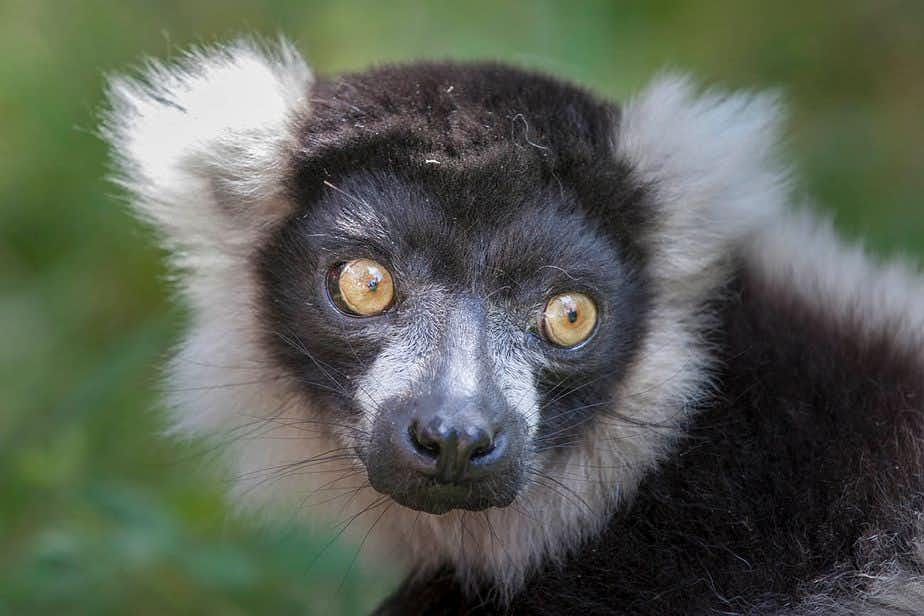Login
No account yet?
Create Account
Ranomafana National Park
A wilderness full of lemurs and chameleons
1 travellers have this on their Bucket List
0 been here
Ranomafana National Park's rainforest is located in the mountains of Madagascar. This nature reserve is well-known for the 12 kinds of lemurs (or makis) that live there. And they're relatively easy to spot.
The Parc Nacional Ranomafana, or Ranomafana National Park, is part of the eastern rainforest, which used to take up nearly all of Madagascar. Rano means water, and mafana means hot, referring to the many hot-water springs, which were used extensively by the colonial French. Ranomafana became a protected area in 1991, after the discovery of the golden bamboo lemur in the rainforest in 1985.
Protected nature reserve
Ranomafana has been protected since 1991 after the discovery of the golden half-lemur in 1985. Until then, this species was not known to science.
Scientists are still trying to document the riches of the rainforests of Madagascar. New plants and animals are discovered to this day, including more kinds of lemurs. They use DNA testing, and conduct tests in remote parts of the rainforest.
The lemur species in Ranomafana
Lemurs are the calling cards of Madagascar. These colourful half-monkeys can only be found on this African island, just like many other plants and animals there. The eastern rainforest on the island includes famous nature reserves such as Ranomafana, where you can still see the effects of evolution.
You have a good chance of encountering lemurs here. I saw seven different species during my visit to the park. Species that live here; golden lemur, gray mouse lemur, broad-nosed lemur, red-headed lemur, red-bellied lemur, red mouse lemur, Milne-Edward's Sifaka, vari, ring-tailed lemur, great cat lemur and bamboo lemur. Furthermore, the very strange looking aye-aye lives there.
The singing of the makis
This is a tour on itself. Many lemurs sing in the early morning, or at least make remarkable noises. you can hear them calling through the forest. Some guides will help you spot the animals. Usually a female in the group starts, followed by the rest. This is a song you must have heard.
Kameleons in Ranomafana
But there is more to the rainforests of Madagascar. The entire island is home to more than two-thirds of all the different species of chameleons that are found on earth. Though most tourists come to Ranomafana to see the lemurs, this unique forest is home to plenty of other animals and plants, which were made famous by the animated movie named Madagascar from 2005.
Other animals
Thankfully, Ranomafana still has an incredibly diverse wealth of flora and fauna. Due to its location, there a not many birds on the island. The most remarkable is the vanga, a species of birds often compared to Darwin’s finches.
Within this species, there are different sub-species, and all of them have a specifically shaped beak, which they developed over the centuries to adapt to their surroundings and food. The sickle-billed vanga, with its remarkably large beak, is spotted regularly in the rainforest.
Night Safari
If you want to come face to face with a fanaloka or dwarf lemur, you have to go out in the evening. Ranomafana is famous for its jungle walks after dark. You walk through the forest in a striking cacophony of sound. With a bit of luck you will see a tenrek (family of the hedgehog) and possibly even red mouse lemurs, the curious fanaloka or fossa.
Sometimes the animals are fed so that they show themselves a bit more easily. Usually the guides take the way through the park, but you can also take the trails in the jungle on request. Take slippery paths into account and bring a good flashlight.
Camping in Ranomafana
In Ranomafana you can pitch your tent at various places, including near the entrance. The special thing is that you hear the evening and night sounds of the forest. And you can experience the sunset and sunrise in the park. And who knows what you see, the chance of ring-tailed mongooses scouring the campsite is ample.
Evolution in Ranomafana
If you’d like to understand how nature developed in Madagascar, you should also take the mainland of Africa into consideration. For millions of years, animals such as elephants, antelopes and rhinos developed, evolving to adapt to their (changing) surroundings. There were also their predators around, which they had to outwit. The monkeys on the mainland also evolved, and now have a much larger brain capacity.
There are no traces of such monkeys in Madagascar, nor evidence that there were ever any large predators such as lions and leopards. The landscape on the island has changed very little either, so there was not much need for the lemurs to evolve much, and this is why lemurs are known as half-monkeys, and are probably a good example of what early monkeys, and potentially even humans, looked like. There were once half-monkeys like these in both Europe and North America, too.
Best time for Ranomafana National Park
The best time to visit is between September and January, roughly their springtime. That’s when many flowers, including the orchids, are in bloom. May is also a good month to visit.
Most rain falls between January and March, but there can be heavy rain fall at other times. The coldest months are July and August, but it won’t get much colder than 17 degrees Celsius.
Be aware
Madagascar is one of the poorest nations on earth, and tourism is still developing. This makes it a great place to visit if you like adventure, but don’t be surprised by the extreme poverty you might encounter, or unexpected events that might disrupt your travel plans. Most travellers go on organised tours, though you can travel alone.
1 travellers have this on their Bucket List
0 been here


